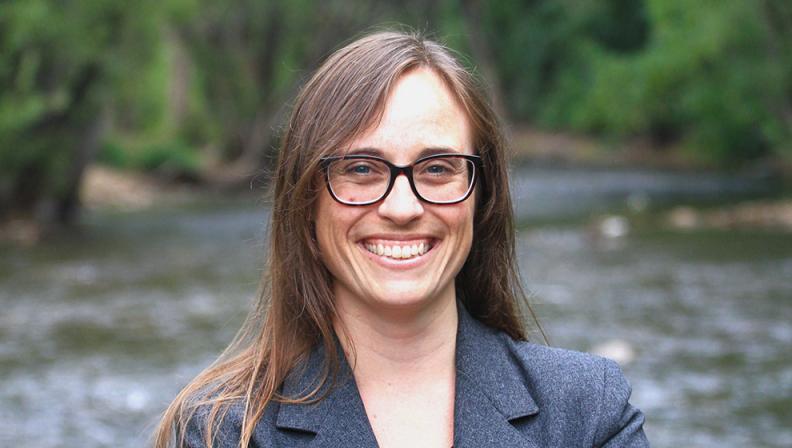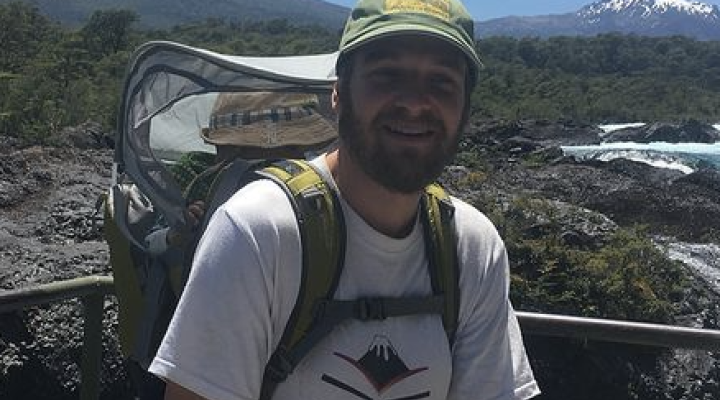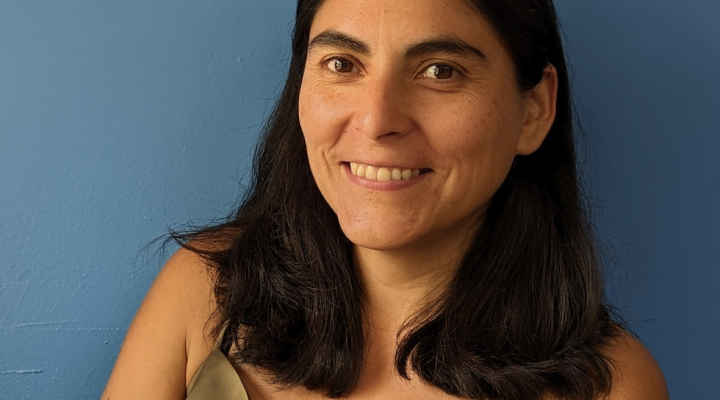Angeline Pendergrass has joined the Cornell Department of Earth and Atmospheric Sciences as an assistant professor. Pendergrass, who joined the department in September 2020, was drawn to Cornell by the people. “The reason I like science is that I want to learn new things about the world, so being in an intellectually stimulating environment surrounded by people curious to learn about many different topics is really important to me,” says Pendergrass.
Pendergrass will be working on Earth’s hydrologic cycle and its response to climate variability and change; with a particular focus on extreme precipitation events in the context of the distribution of precipitation in space, time and intensity.
Her research is grounded in a top-down approach that considers fundamental questions about precipitation and its change, including: what role does precipitation play in the flow of energy through the climate system, and what can we learn about precipitation and its change from this? How have extreme precipitation events changed in the past, how will change in the future, and what processes drive these changes? How accurately do models simulate the hydrologic cycle, and how can we improve their accuracy? What are the causes and consequences of changes in the hydrologic cycle for circulation of the atmosphere and ocean, climate sensitivity, and society?
In order to address these questions, she develops compact but powerful and useful metrics to describe the characteristics of precipitation. Her toolbox includes theory, analysis of observations, and a hierarchy of models from fully coupled climate models to radiative transfer models and heuristic stochastic models.
Weather has intrigued Pendergrass since she was a young child. She remembers a very notable change in weather when her family moved from the east to west side of Lake Michigan. “The change was dramatic - we went from plenty of snow on the ground, to wide-open blustery winter skies and what never seemed to be enough snow accumulation... But the idea of studying the atmosphere as a career really started to come together in high school,” says Pendergrass. Her interest in math, physics and the weather led her to decide to study meteorology in college.
Pendergrass studied meteorology at the University of Miami in Florida where she had a number of undergraduate research opportunities. During her undergraduate years, she worked on projects to calculate the flux of water vapor into and out of the Caribbean basin, compare methods of bias correction for weather forecasts and do a case study of a sea fog event on the Yellow Sea in China.
Pendergrass worked on a project her senior year that launched her into the area of research she is in today. She worked with Professor Brian Soden, one of her mentors, to adapt radiative kernels that Soden had been using to diagnose climate feedbacks at the top of atmosphere to the surface energy budget, connecting the surface energy budget to precipitation change.
After a foray into data assimilation for paleoclimate for her Master’s thesis, Pendergrass then went on to pursue her Ph.D. in atmospheric sciences at the University of Washington. She looked at changes in precipitation in response to warming - extended what she’d started as an undergrad, diagnosing the changes in the atmospheric energy budget that balanced global-mean precipitation change in response to greenhouse gas and also aerosol forcing.





